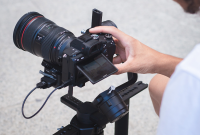Capturing Underwater Moments
Simply said, you can make a memory anyplace. Memories may be made everywhere, even underwater, which inspired the development of waterproof digital cameras.
It’s not only vacationers that benefit from having an underwater digital camera; some marine photographers use them professionally as well. Underwater digital cameras have become so commonplace that even marine biologists and scientists use them to investigate marine life and its qualities. You, the reader, are probably neither a marine scientist nor a skilled photographer, however. You’re probably just another picture addict like me who’s frustrated by the inability to take decent underwater shots.
Believe me when I tell you that no camera, no matter how watertight, can endure photographing underwater. To be waterproof is to be resistant to water up to a certain point; to submerge anything underwater in order to capture the ideal photo is like tossing it out the window and hoping a pick-up truck will drive over it.
Now, if you are dead-set on capturing those crazy and hilarious moments underwater with a digital camera, I recommend investing in a specialized camera.
Due to the electrical nature of modern cameras, few of them can be used underwater. Producing waterproof housings for existing digital cameras is the electrical industry’s closest approach to making fully functional underwater cameras. With this housing, your regular digital camera may function as an underwater camera.
When using a digital camera underwater, there are a few things to keep in mind to ensure you get the best shots possible.
Keep in mind that light scatters the deeper you go into the ocean. Because the red spectrum appears darker due to light diffusion, underwater digital camera photographs will be darker than those taken on land. Use white balance to create colors that seem like they came from nature to prevent this. Additionally, the zoom effect will make underwater photographs seem bigger than those shot on land. When taking pictures underwater with a digital camera, use the viewfinder to make sure you’re getting the shot you want.
Marine show phenomena may be captured using an underwater digital camera equipped with a flash. When you take photos underwater with a digital camera, you often get blurry pictures with white particles floating around. To avoid this, you should use external light.
Check for water leaks by submerging your digital camera in water for a few seconds before you plan to use it underwater. To prevent water from entering the case and damaging your camera, check the seal and remove any debris, such as a speck of sand or a strand of hair. Underwater digital cameras benefit from having a small amount of silica gel placed within the casing, provided that doing so does not interfere with the camera’s functionality. Your camera case will stay dry thanks to the silica gel.
There are a variety of lenses available for use with most underwater digital cameras. Don’t be hesitant to upgrade your underwater digital camera with these lenses. Macro lenses are great for taking pictures of tiny details without having to approach too close and scare away your subject.
You should always rinse salt off after using anything under salt water. The salts will eventually crystallize, becoming like sand and causing leaks in your camera case if you don’t wipe them off. Water jets work best for removing sand that has found its way into a case.
You may find digital camera underwater housings on the websites of Sony, Nikon, and Canon.




